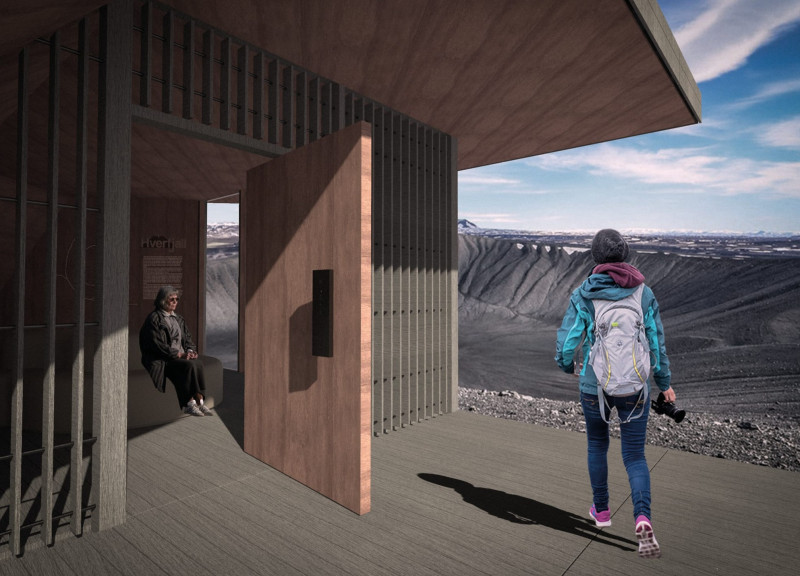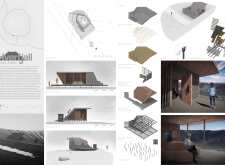5 key facts about this project
The project emphasizes an immersive experience within nature. Its form integrates seamlessly with the volcanic terrain, featuring a combination of rugged natural materials and innovative design solutions that prioritize sustainability and user comfort. The structural orientation takes advantage of expansive views, allowing for natural light and reducing reliance on artificial illumination.
Unique Design Approaches
The architecture exhibits an asymmetrical form that mimics the contours of the volcanic landscape. This design approach not only adds visual interest but also aligns the structure with its environment. Large windows are strategically placed to frame key views, engaging occupants with the stunning surroundings while promoting transparency.
Materials used in the project include wooden panels, concrete, waterproof membranes, and glass. Wooden panels create warmth within the interior and serve a significant aesthetic role. Concrete is strategically employed for its durability against the harsh Icelandic climate. The waterproof membranes ensure the longevity of wooden components. Glass facilitates unobstructed views, enhancing the overall experience of place.
Interior spaces are well-defined yet flexible, allowing for multifaceted uses. The primary observation area is the focal point, designed for comfort and interaction with the landscape. Built-in seating arrangements support relaxation and socialization among visitors. Additionally, utility spaces are integrated discreetly to maintain the clean lines of the design.
Distinctive Features of the Hvertfjall Volcanic Hideout
The project is notable for its commitment to sustainability through material choices and construction methods. The use of locally sourced materials minimizes the environmental footprint. The structure incorporates climbing pegs, encouraging active engagement from visitors and enhancing the recreational aspect of the experience.
The architectural design demonstrates a balance between aesthetic appeal and functionality, ensuring it serves its purpose as a retreat in nature. By responding to its geographical context and prioritizing user experience, the Hvertfjall Volcanic Hideout represents a thoughtful integration of architecture and landscape.
For further insights into the technical aspects of this project, including architectural plans and sections, interested parties are encouraged to explore additional resources to gain a deeper understanding of the design methodologies employed.























